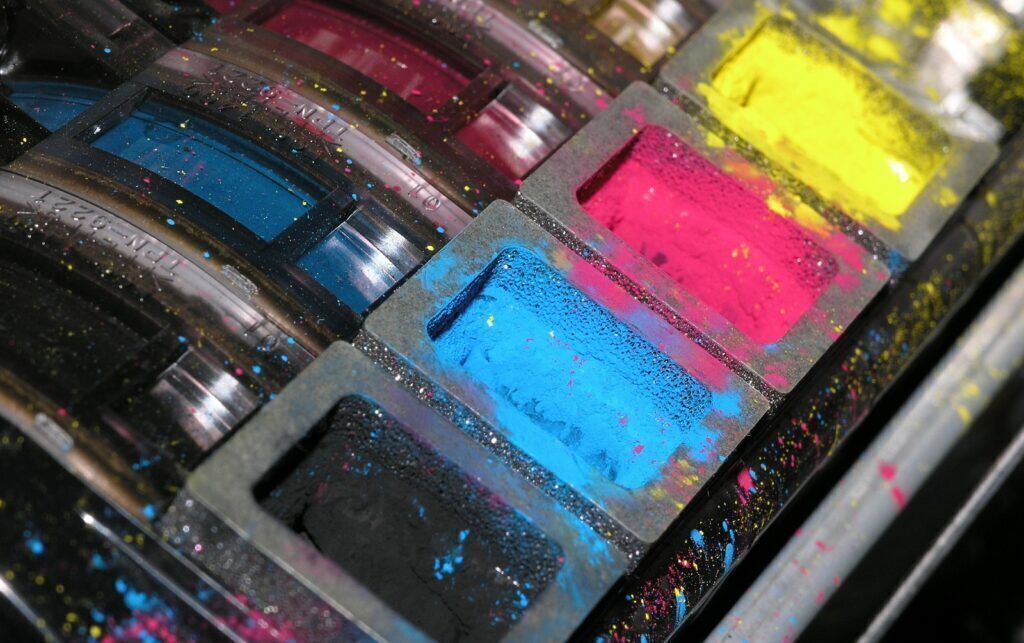Have you seen paper disappearing from your workplace? Of course you haven’t. The idea of the “paperless office” that is free of printers was pie in the sky, more of a hope and a dream than something grounded in reality.
The practicalities of running any business dictate that SMEs still own and operate at least one printer, even in 2023. Because no matter how far technology has come, it seems that someone, somewhere, will inevitably want a physical copy of a digital document.
And that’s why we’ve put together this quick guide for anyone in the market for a workplace printer that covers the considerations to keep in mind when shopping for one.
Printing Volume
Figure out the average number of pages your business prints each month. This will help you choose a printer with the appropriate duty cycle and recommended monthly print volume. Not all printers are created equal, so knowing these stats beforehand will be a big help when seeking a printer that meets your needs.
Print Speed
Consider how quickly you need your documents printed. Some are speed demons, while others will make you wait for even the simplest jobs. It might sound obvious, but if your business requires high-speed printing, look for a printer with faster print speeds. If possible, talk to a salesperson and request a demonstration to see it in action for yourself.
Just keep in mind that high-speed printers will cost more than their slower peers, so a compromise between cost and performance will ultimately serve your needs best.
Print Quality
Assess the print quality required for your business. If you need to print professional documents or images, choose a printer with high resolution and colour accuracy. In the past, laser printers produced the highest quality documents, but inkjet technology has come such a long way that today, even they can produce laser-quality prints.
The stat to look for on the printer’s spec sheet is “DPI”, or “dots per inch”. The higher this number is, the sharper the print results. If you’re shopping in-store, ask the salesperson if they have sample prints to show you from the printer you’re interested in so you can do a direct comparison.
Paper Handling
Evaluate your business’s paper-handling requirements. Consider the sizes and types of paper your business uses and get a printer that can handle them. Remember that it’s far more common for printers to print A4 pages than it is for them to print A3. Look for features like automatic duplex printing (the ability to print on both sides of the paper without manual intervention) and the presence of multiple paper trays.
Multiple paper trays make it possible to load different paper types at the same time. The feature also lets you store more paper at once, reduce paper waste, and streamline certain jobs. You can, for example, specify one tray for everyday printing, another for envelopes, and another for labels, making it easier for staff to print what they need by adjusting settings in the print job.
Connectivity
The second-most important consideration after you’ve decided on laser or ink is how the printer connects to your office IT environment. Ideally, what you want is a printer with a USB port, a LAN port, and wireless connectivity, as this provides maximum flexibility when it comes to giving staff access to its functions.
Wireless is the most convenient since you can place the printer pretty much anywhere in your office, so if you’re going to sacrifice anything, sacrifice the other two connections.
Multifunction Capability
Most businesses also need to scan, copy, and fax documents (although fewer need the last option these days). A multifunction printer that does all of this can help consolidate your office equipment and save on costs and space.
Cost Efficiency
Perhaps the most important consideration in these tough economic times is the total cost of ownership of a printer, which includes the initial purchase price, ongoing supplies (ink or toner cartridges, paper), and maintenance costs. Look for printers that offer cost-saving features like high-yield cartridges or ink-saving modes.
Also be sure to find out the replacement cost of supplies, as in some cases these are astronomical. It’s not uncommon to find cheap printers that cost almost as much as replacement ink/toner, so be sure to do your due diligence before committing.
Compatibility
This one is less important because of global compatibility, but we’ll mention it anyway: make sure that the printer is compatible with your business’s operating systems and software applications.
Most printers you’ll buy these days support both Windows and Mac and if you’re using another operating system like Linux, there are probably drivers for them somewhere if you look hard enough, so this is a bit of a moot point. Or is it?
Support and Warranty
Be sure to check the manufacturer’s reputation for customer support and the length and coverage of the warranty provided with the printer. Online reviews are a good source of this information.
You don’t want to get back to the office with an out-of-box failure only to have to wait weeks for the printer to be fixed because the company’s policy is to not swap out defective units immediately.
User-Friendliness
Consider the ease of use and user interface of the printer. Look for features like touchscreen controls, intuitive navigation, and easy maintenance procedures. Printers with touchscreens are the best here, as all you need to do is read the screen and follow instructions.
Printers from established manufacturers like HP, Epson, Canon, and Brother incorporate the many lessons those companies have learned over the years about what customers need from their printer interfaces. As such, their designs have been streamlined to meet those in the easiest and most convenient ways possible.
Security Features
Check out the printer’s security features, especially if you handle sensitive or confidential information. Look for features like user authentication, data encryption, and secure printing options. Forcing users to enter a code before collecting sensitive documents is the industry-standard way of handling things like this, and you need to know if the printer you’re considering has the feature.
Reviews and Recommendations
Look up online reviews and seek out recommendations from other businesses or industry professionals who have experience with the printers you are considering. Nothing says “this printer is awesome” like glowing reviews from hundreds or thousands of people. Likewise, it’s a great way to find out about the potential pitfalls of your possible printer purchase before committing.
Rent or own?
Stuff recently published an article about the question of renting vs owning your business equipment, and it’s most applicable to things like printers.
The biggest advantage of renting a printer is that the printer is entirely the rental company’s problem. The rental company sets it up, and all you are doing is printing and paying for what you use; if it breaks down (and it will, because printers suck) the rental company must come and fix it, and within an agreed-upon time. Likewise, if it runs out of ink or toner, it’s up to the rental company to top it up.
The disadvantage of renting is you will end up paying more for the printer over time compared to what you’d pay to own it outright. But since you’re also dodging the problems that will inevitably arise, it is, in our opinion, worth paying a bit extra to rent.
By keeping all of this in mind, you can make an informed decision and choose a printer that aligns with your business’s specific needs and budget. Don’t just buy the first one you see, ask some pointed questions, and you’ll likely find a printer that will meet your business needs.




